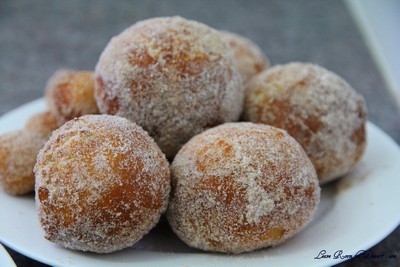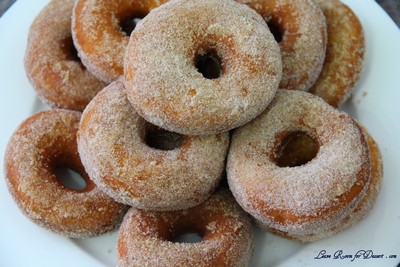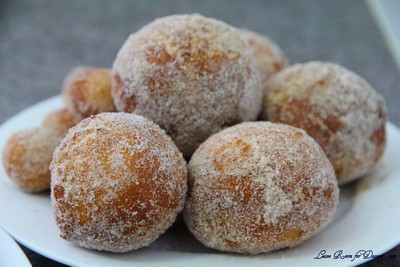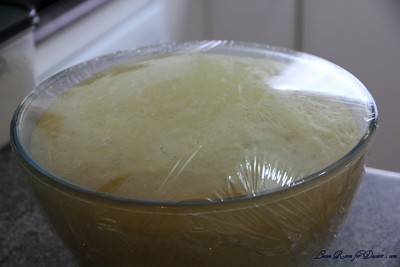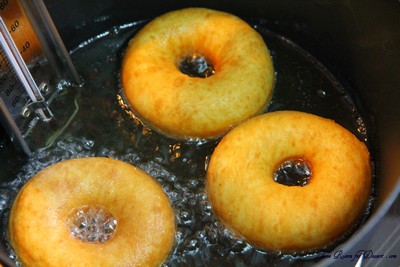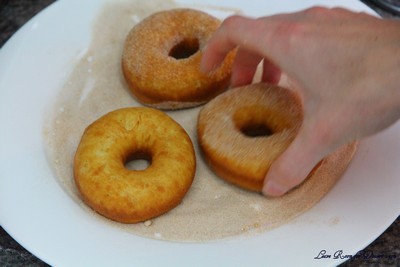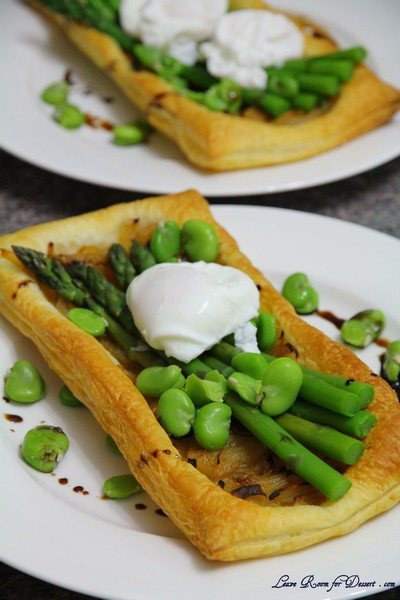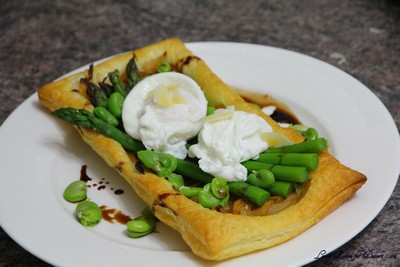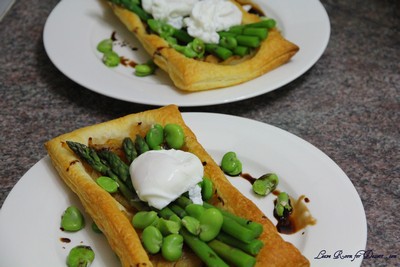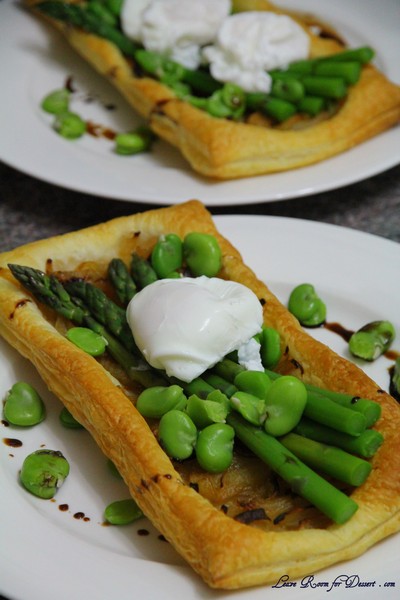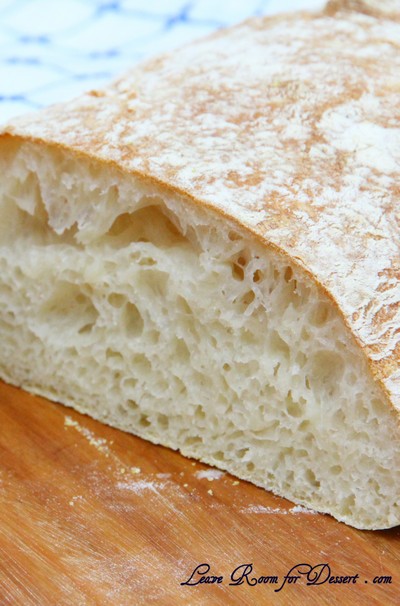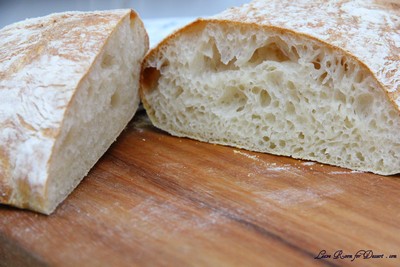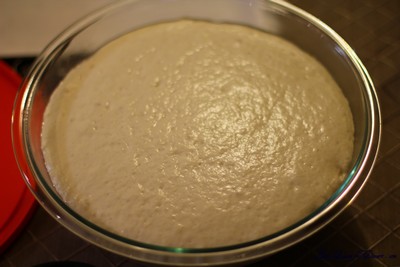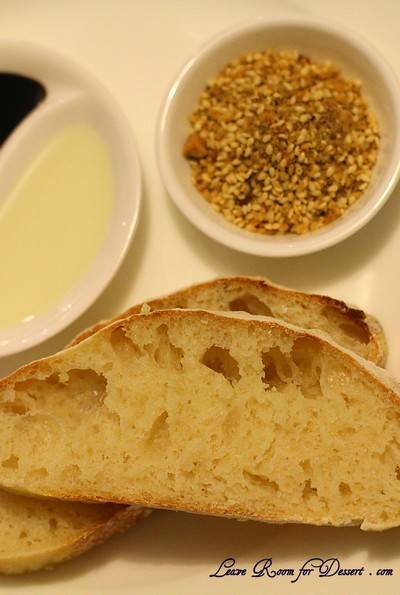
The October 2010 Daring Bakers challenge was hosted by Lori of Butter Me Up. Lori chose to challenge DBers to make doughnuts. She used several sources for her recipes including Alton Brown, Nancy Silverton, Kate Neumann and Epicurious.
Will this year get any busier?? I hope not – but I’m pretty sure it will.
October has been an amazing month. Birthdays always have a huge presence in October – with my family and friends accounting for at least 7 birthdays.
I did manage to fit in the Daring Bakers Challenge this month, though I couldn’t cater to all the requests (custard filled doughnuts didn’t make it). I ended up making the common cinnamon sugared doughnuts – which I often crave whilst out at the shops (and no – I don’t buy them even 10% of the time I want them).
I made these doughnuts the day after my first progressive dinner with friends. It was a lovely long evening with good friends, good food, lots of laughs and full tummies. I bet you can guess what course I cooked for the dinner?
Back to the doughnuts – these were lovely and you couldn’t get them any fresher. They were soft and delicious and even tasted ok the next day.
We tried to encase some chocolate inside some of the leftover dough and fry that, but either the cooking time wasn’t long enough or the dough was thicker (due to more handling) and didn’t cook as well. So, the chocolate filled doughnuts were still a bit raw inside…
I also tried the dough in a mini doughnut maker I was given – although it didn’t work, and I expect the recipe for the doughnut maker works a lot better.
For the recipe I used (and have given below), I felt that there was too much oil used in the saucepan. These doughnuts floated, and therefore you only need the oil a little deeper than half the height of the doughnut.
Even though I loved the doughnuts, I don’t tend to fry many things, mainly due to the excess oil that is often wasted. I did enjoy this challenge though. Thanks to our host for providing so many recipes and ideas for this month’s challenge.
Yeast Doughnuts
Preparation time:
Hands on prep time – 25 minutes
Rising time – 1.5 hours total
Cooking time – 12 minutes
Yield: 20 to 25 doughnuts & 20 to 25 doughnut holes, depending on size
Ingredients
Milk 1.5 cup / 360 ml
Vegetable Shortening 1/3 cup / 80 ml / 70 gm / 2.5 oz (can substitute butter, margarine or lard) – I used butter
Active Dry Yeast 4.5 teaspoon (2 pkgs.) / 22.5 ml / 14 gm / ½ oz
Warm Water 1/3 cup / 80 ml (95°F to 105°F / 35°C to 41°C)
Eggs, Large, beaten 2
White Granulated Sugar ¼ cup / 60 ml / 55 gm / 2 oz
Table Salt 1.5 teaspoon / 7.5 ml / 9 gm / 1/3 oz
Nutmeg, grated 1 tsp. / 5 ml / 6 gm / ¼ oz
All Purpose Flour 4 2/3 cup / 1,120 ml / 650 gm / 23 oz + extra for dusting surface
Canola Oil DEPENDS on size of vessel you are frying in – you want THREE (3) inches of oil (can substitute any flavorless oil used for frying)
Place the milk in a medium saucepan and heat over medium heat just until warm enough to melt the shortening. (Make sure the shortening is melted so that it incorporates well into the batter.)
Place the shortening in a bowl and pour warmed milk over. Set aside.
In a small bowl, sprinkle the yeast over the warm water and let dissolve for 5 minutes. It should get foamy. After 5 minutes, pour the yeast mixture into the large bowl of a stand mixer and add the milk and shortening mixture, first making sure the milk and shortening mixture has cooled to lukewarm.
Add the eggs, sugar, salt, nutmeg, and half of the flour. Using the paddle attachment of your mixer (if you have one), combine the ingredients on low speed until flour is incorporated and then turn the speed up to medium and beat until well combined.
Add the remaining flour, combining on low speed at first, and then increase the speed to medium and beat well.
Change to the dough hook attachment of the mixer and beat on medium speed until the dough pulls away from the bowl and becomes smooth, approximately 3 to 4 minutes (for me this only took about two minutes). If you do not have a dough hook/stand mixer – knead until the dough is smooth and not sticky.
Transfer to a well-oiled bowl, cover, and let rise for 1 hour or until doubled in size.
On a well-floured surface, roll out dough to 3/8-inch (9 mm)thick. (Make sure the surface really is well-floured otherwise your doughnuts will stick to the counter).
Cut out dough using a 2 1/2-inch (65 mm) doughnut cutter or pastry ring or drinking glass and using a 7/8-inch (22 mm) ring for the center whole. Set on floured baking sheet, cover lightly with a tea towel, and let rise for 30 minutes.
Preheat the oil in a deep fryer or Dutch oven to 365 °F/185°C.
Gently place the doughnuts into the oil, 3 to 4 at a time. Cook for 1 minute per side or until golden brown (my doughnuts only took about 30 seconds on each side at this temperature).
Transfer to a cooling rack placed in baking pan. Allow to cool for 15 to 20 minutes prior to glazing, if desired. Allow to cool slightly before coating in cinnamon sugar.
Cinnamon Sugar:
Mix together ¾ cup caster sugar with ½ teaspoon cinnamon for coating the doughnuts.
